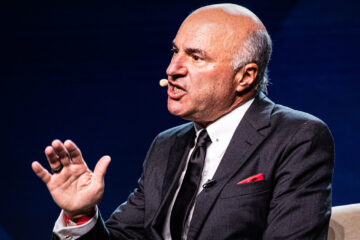The two warehouse clubs have seen their businesses grow due to the pandemic, but costs have also gone up.
Walmart’s (WMT) – Get Walmart Inc. Report Sam’s Club just made the most careful price increase that any company could pull off. The warehouse club has raised its basic membership fee from $45 to $50 per year and its “Plus” membership from $100 to $110.
But, because the company understands the optics of raising prices at a time when consumers are hyper-conscious about rising costs, the increase comes with a pretty major caveat. Sam’s Club will be giving existing members $5 or $10 in “Sam’s Cash,” essentially a gift card, on their next renewal.
That move dulls the blow of the increase and allows the company to raise prices for the first time in nine years for regular members and the first time since 1999 for Plus members without it actually causing a negative reaction.
Yes, new members who join after the increase takes effect on Oct, 17 will pay the higher prices, but anyone thinking about joining now has roughly six weeks to join before they would have to pay the higher price. This is Walmart making a very smart, long-range move that will minimize the impact on customers which should limit, if not eliminate, increased churn.
It’s also a move that clears the way for the company’s chief rival, Costco (COST) – Get Costco Wholesale Corporation Report, to do the same thing.
Ting Shen/Xinhua via Getty) (Xinhua/ via Getty Images
Costco Has Addressed Raising Membership Fees
Costco generally raises its membership prices every five-and-a-half years. The chain last increased the cost of joining in June 2017, putting it roughly in the ballpark of where it would communicate an upcoming price increase to members.
Currently, a Costco Gold Star membership costs $60 while an Executive Membership, which offers 2% back on most purchases (up to $1,000 annually), costs $120.
Costco Senior Vice President of Finance Bob Nelson, filling in for vacationing CFO Richard Galanti, addressed a possible price increase during the warehouse club’s third-quarter earnings call.
“As we approach this five-and-a-half-year mark, there will be more discussions with Craig, Ron, and the executive team,” he said. “But for today, we have nothing more specific to report in terms of timing. In addition, given the current macro environment, the historically high inflation, and the burden it’s having on our members and all consumers in general, we think increasing our membership fee today ahead of our typical timing is not the right time.”
Costco Will Likely (and Should) Raise Its Membership Fees
Costco has, like its rival, been very wary of the appearance of adding to its customers’ burdens during an already financially stressful time. Sam’s Club increasing its prices does give the chain some cover for its own increase, and offering a similar “cash back” incentive that makes the first increase not really an increase at all is a move the company could copy.
It makes more sense, however, for Costco, which still charges more than Sam’s Club for both membership tiers, to announce an increase that goes into effect after the holiday season. That would give the company a more equal playing field with its rival in the fourth quarter while giving potential new members an incentive to lock in the current rates for the next 12 months.
It’s hard to argue that Costco and Sam’s Club don’t offer members excellent value for the price of a membership. Both face higher costs and a small increase in membership fees is more than justified. Both chains are right, however, to approach the idea carefully and to give existing members a lot of notice.
Realistically, while the extra money has a meaningful bottom-line impact on both chains, its impact on customers — even in strained economic times — is very minimal. That’s why Sam’s Club won’t experience much, if any, blowback from making the move and Costco should be able to follow.


